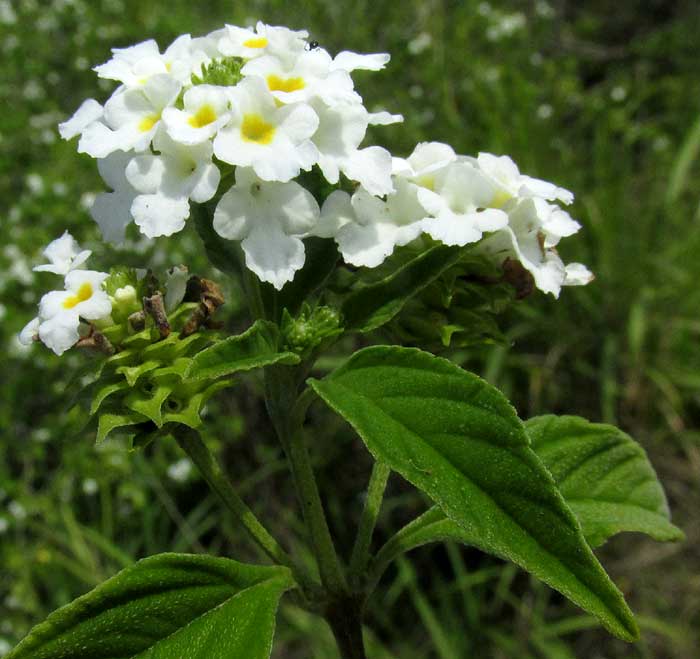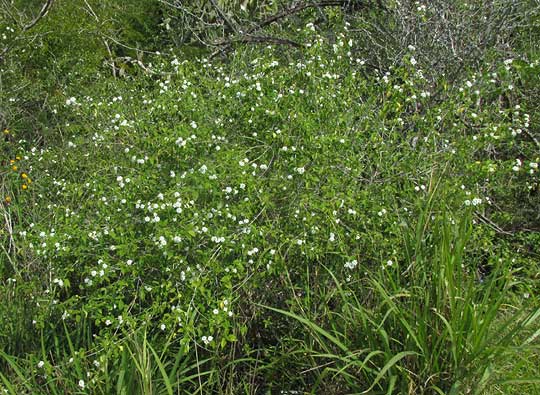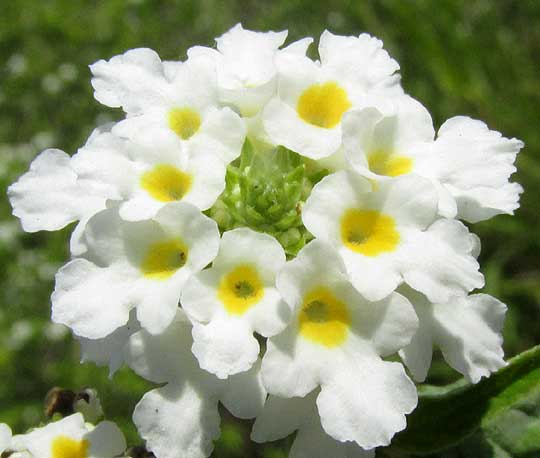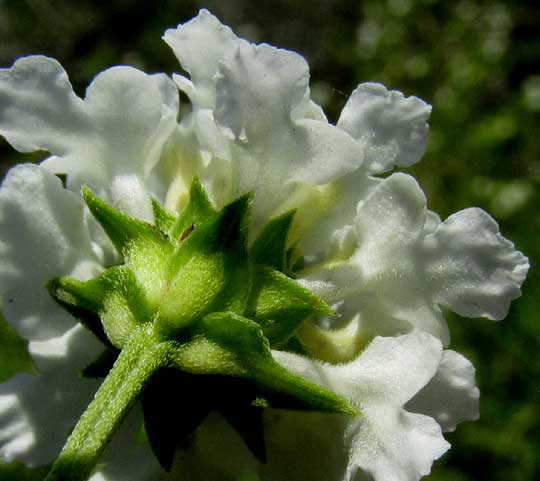Excerpts from Jim Conrad's
Naturalist Newsletter

from the March 1, 2015 Newsletter issued from Río Lagartos, on the Yucatan Peninsula's northern coast (~N21.60°, ~W88.16°), Yucatán state, MÉXICO
WILD OREGANO
Back at Hacienda Chichen in the central Yucatan, Chef Cime used Wild Oregano, LIPPIA GRAVEOLENS, in his five-star cooking. Our page profiling the cultivated, much-branched, soft-woody shrub with its pungent smelling leaves is at www.backyardnature.net/yucatan/oregano.htm.
Here Wild Oregano commonly grows along backcountry roads and it's flowering conspicuously nowadays, as shown with a head-high bush below:

Up closer you see that what from a distance seem like Wild Oregano flowers are actually dense clusters of small, white blossoms with yellow centers, as shown at the top of this page. The flowers closer-up, showing their bilaterally symmetrical "faces" -- with enlarged lower lips serving as landing pads for pollinators -- are seen below:

A view of a flower cluster from below, showing the green involucre formed of the head's sharp-pointed bracts is shown below:

Though pungent, crushed Wild Oregano leaves don't smell much like "real Oregano," nor or they minty or sweet smelling. That's no surprise, though, since real Oregano belongs to the Mint Family while Wild Oregano resides in the Vervain or Verbena Family.
Any plant with strong-smelling herbage is likely to be used in traditional medicine, and that's the case with Wild Oregano, which grows from Texas and New Mexico south through Mexico to Costa Rica. In Mexico a tea brewed from it is used for diarrhea and indigestion in babies. In a liter of boiling water add ten Wild Oregano leaves, and sprigs of Chamomile and "Moro," the latter being Turnera diffusa.
A 2011 study by Marciele Ribas Pilau et al found that oil of Wild Oregano can inhibit various human and animal viruses, at least in a test tube.